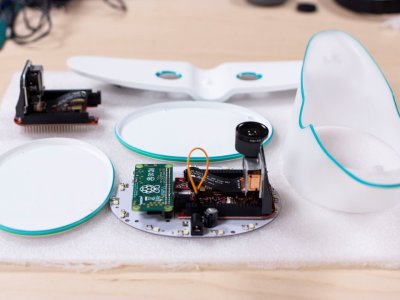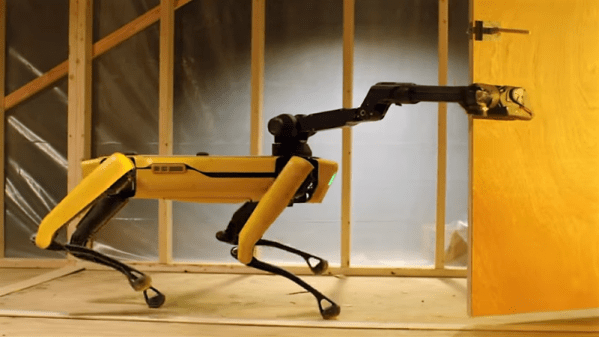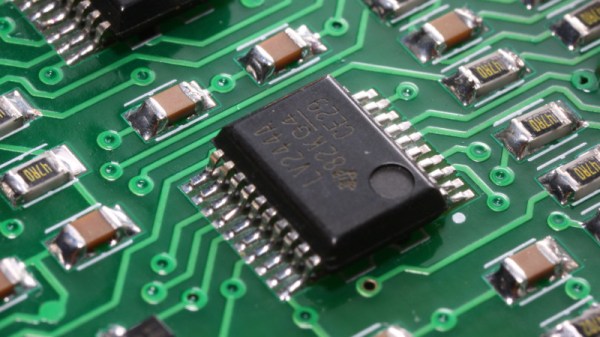Since Dick Tracy all the way back in ’46, smart watches have captured the public imagination. After several false starts, the technology has gone through a renaissance in the last 10 years or so. For the average consumer, there’s been a proliferation of hardware in the marketplace, with scores of different models to choose from. For the hackers, however, pickings are a little more slim. So what is the best smart watch for the tinkerers among us? Continue reading “Ask Hackaday: What’s The Perfect Hacker Smart Watch?”
Ask Hackaday185 Articles
Ask Hackaday: Does Your Car Need An Internet Killswitch?
Back in the good old days of carburetors and distributors, the game was all about busting door locks and hotwiring the ignition to boost a car. Technology rose up to combat this, you may remember the immobilizer systems that added a chip to the ignition key without which the vehicle could not be started. But alongside antitheft security advances, modern vehicles gained an array of electronic controls covering everything from the entertainment system to steering and brakes. Combine this with Bluetooth, WiFi, and cellular connectivity — it’s unlikely you can purchase a vehicle today without at least one of these built in — and the attack surface has grown far beyond the physical bounds of bumpers and crumple zones surrounding the driver.
Cyberattackers can now compromise vehicles from the comfort of their own homes. This can range from the mundane, like reading location data from the navigation system to more nefarious exploits capable of putting motorists at risk. It raises the question — what can be done to protect these vehicles from unscrupulous types? How can we give the user ultimate control over who has access to the data network that snakes throughout their vehicle? One possible solution I’m looking at today is the addition of internet killswitches.
Continue reading “Ask Hackaday: Does Your Car Need An Internet Killswitch?”
Ask Hackaday: What Good Is A Robot Dog?
It is said that Benjamin Franklin, while watching the first manned flight of a hot air balloon by the Montgolfier brothers in Paris in 1783, responded when questioned as to the practical value of such a thing, “Of what practical use is a new-born baby?” Dr. Franklin certainly had a knack for getting to the heart of an issue.
Much the same can be said for Spot, the extremely videogenic dog-like robot that Boston Dynamics has been teasing for years. It appears that the wait for a production version of the robot is at least partially over, and that Spot (once known as Spot Mini) will soon be available for purchase by “select partners” who “have a compelling use case or a development team that [Boston Dynamics] believe can do something really interesting with the robot,” according to VP of business development Michael Perry.
The qualification of potential purchasers will certainly limit the pool of early adopters, as will the price tag, which is said to be as much as a new car – and a nice one. So it’s not likely that one will show up in a YouTube teardown video soon, so until the day that Dave Jones manages to find one in his magic Australian dumpster, we’ll have to entertain ourselves by trying to answer a simple question: Of what practical use is a robotic dog?
Ask Hackaday: At What Point Is Hand Pick And Place Too Much Work?

A friend of ours here at Hackaday has an audacious design in the works that we hope will one day become a prototype that we can feature here. That day may be a little while coming though, because it has somewhere close to a thousand of the smaller SMD components in multiple repeated blocks on a modestly sized board, and his quote from a Chinese board house for assembly is eye-watering. He lacks a pick-and-place machine of his own, and unsurprisingly the idea of doing the job by hand is a little daunting.
We can certainly feel his pain, for in the past we’ve been there. The job described in the linked article had a similar number of components with much more variety and on a much larger board, but still took two experienced engineers all day and into the night to populate. The solder paste had started to spread by the end, morphing from clearly defined blocks to an indistinct mush often covering more than one pad. Our eyes meanwhile were somewhat fatigued by the experience, and it’s not something any sane person would wish to repeat.
Mulling over our friend’s board and comparing it with the experience related above, are we on the edge of what is possible with hand pick-and-place, or should we be working at the next level? Board assembly is a finely judged matter of economics at a commercial level, but when at a one-off personal construction level the option of paying for assembly just isn’t there, is there a practical limit to the scale of the task? Where do you, our readers, draw the line? We’d love to hear your views.
Meanwhile our friend’s audacious project is still shrouded in a bit of secrecy, but we’ll continue to encourage him to show it to the world. It’s not often that you look at a circuit diagram and think “I wish I’d thought of that!”, but from what we’ve seen this fits the category. If he pulls it off then we’ll bring you the result.
PCB image, Andrew Magill (CC BY 2.0).
Ask Hackaday: How Would You Build This Flight Tracker For Kids?
You’ve got to hand it to marketers – they really know how to make you want something. All it takes is a little parental guilt, a bit of technical magic, and bam, you’re locked into a product you never knew you needed.
This prototype flight tracking nightlight for kids is a great example. Currently under development by Canadian airline WestJet, the idea is to provide a way for traveling parents to let kids know how long it is until Mommy or Daddy gets home from their trip. The prototype shows a stylized jet airliner with Neopixel lighting in the base. A pair of projectors in the wings shine an animated flight path on the child’s darkened bedroom ceiling, showing them when the wayward parent will return. Get past the schmaltz in the video below, and perhaps get over your jealousy of parents with kids who still eagerly await their return, and it’s actually a pretty good idea.
 Now for the ask: how would you go about building something like this? And more importantly, how would you make it work for any plane, train, or automobile trip, and not just a WestJet flight? A look at the “How it will work” section of the page shows several photos of the prototype, which suggests the hardware end is dead easy. A Raspberry Pi Zero W features prominently, and the projectors appear to be TI’s DLP2000EVM, which we’ve featured before, mounted to a riser card. The Neopixels, a 3D-printed case, and the superfluous flashlight fuselage would be pretty easy, too.
Now for the ask: how would you go about building something like this? And more importantly, how would you make it work for any plane, train, or automobile trip, and not just a WestJet flight? A look at the “How it will work” section of the page shows several photos of the prototype, which suggests the hardware end is dead easy. A Raspberry Pi Zero W features prominently, and the projectors appear to be TI’s DLP2000EVM, which we’ve featured before, mounted to a riser card. The Neopixels, a 3D-printed case, and the superfluous flashlight fuselage would be pretty easy, too.
On the software side, a generic version that tracks flight from any airline would need an interface for the traveler to define a flight, and something to check an API like FlightAware’s, or similar ones for whatever mode of transportation you’re using.
Seems like a pretty straightforward project. WestJet claims they’ll have their Flight Light ready sometime this summer; think we can beat them to it?
Continue reading “Ask Hackaday: How Would You Build This Flight Tracker For Kids?”
Ask Hackaday: How Can You Build For A Ten Millennia Lifespan?
There’s been a lot of news lately about the Long Now Foundation and Jeff Bezos spending $42 million or so on a giant mechanical clock that is supposed to run for 10,000 years. We aren’t sure we really agree that it is truly a 10,000 year clock because it draws energy — in part — from people visiting it. As far as we can tell, inventor Danny Hills has made the clock to hoard energy from several sources and occasionally chime when it has enough energy, so we aren’t sure how it truly sustains itself. However, it did lead us to an interesting question: how could you design something that really worked for 10,000 years?
Continue reading “Ask Hackaday: How Can You Build For A Ten Millennia Lifespan?”
Ask Hackaday: What Skills Would You Give A Twelve Year Old?
In several decades of hanging around people who make things, one meets a lot of people fascinated by locks, lock picking, and locksport. It’s interesting to be sure, but it had never gripped me until an evening in MK Makerspace when a fellow member had brought in his lockpicking box with its selection of locks, padlocks, and tools. I was shown the basics of opening cheap — read easy from that— padlocks, and though I wasn’t hooked for life I found it to be a fascinating experience. Discussing it the next day a friend remarked that it was an essential skill they’d taught their 12-year-old, which left me wondering, just what skills would you give to a 12-year-old? Continue reading “Ask Hackaday: What Skills Would You Give A Twelve Year Old?”

















